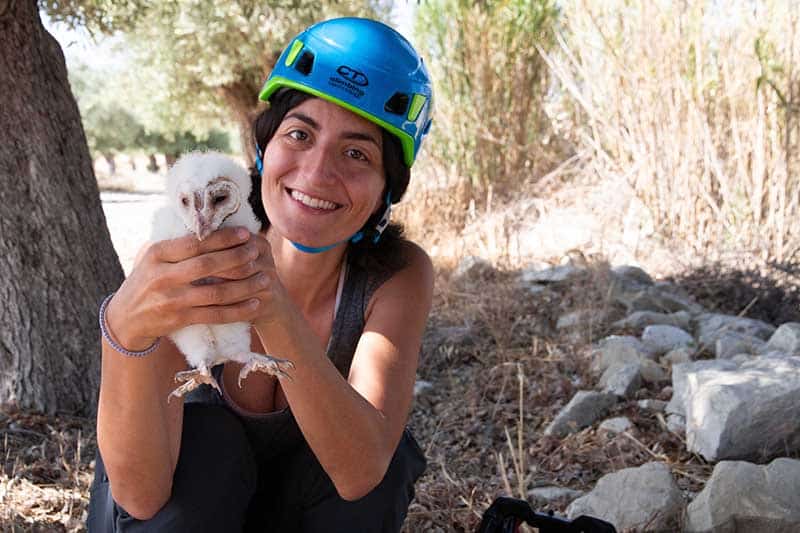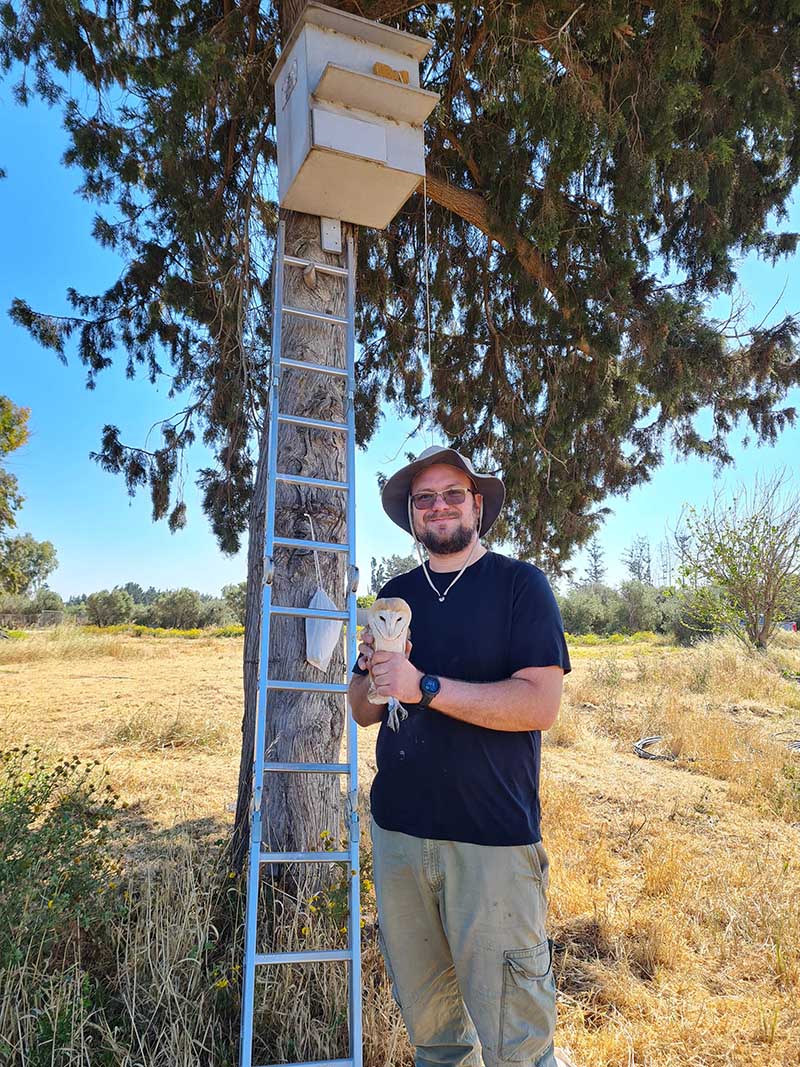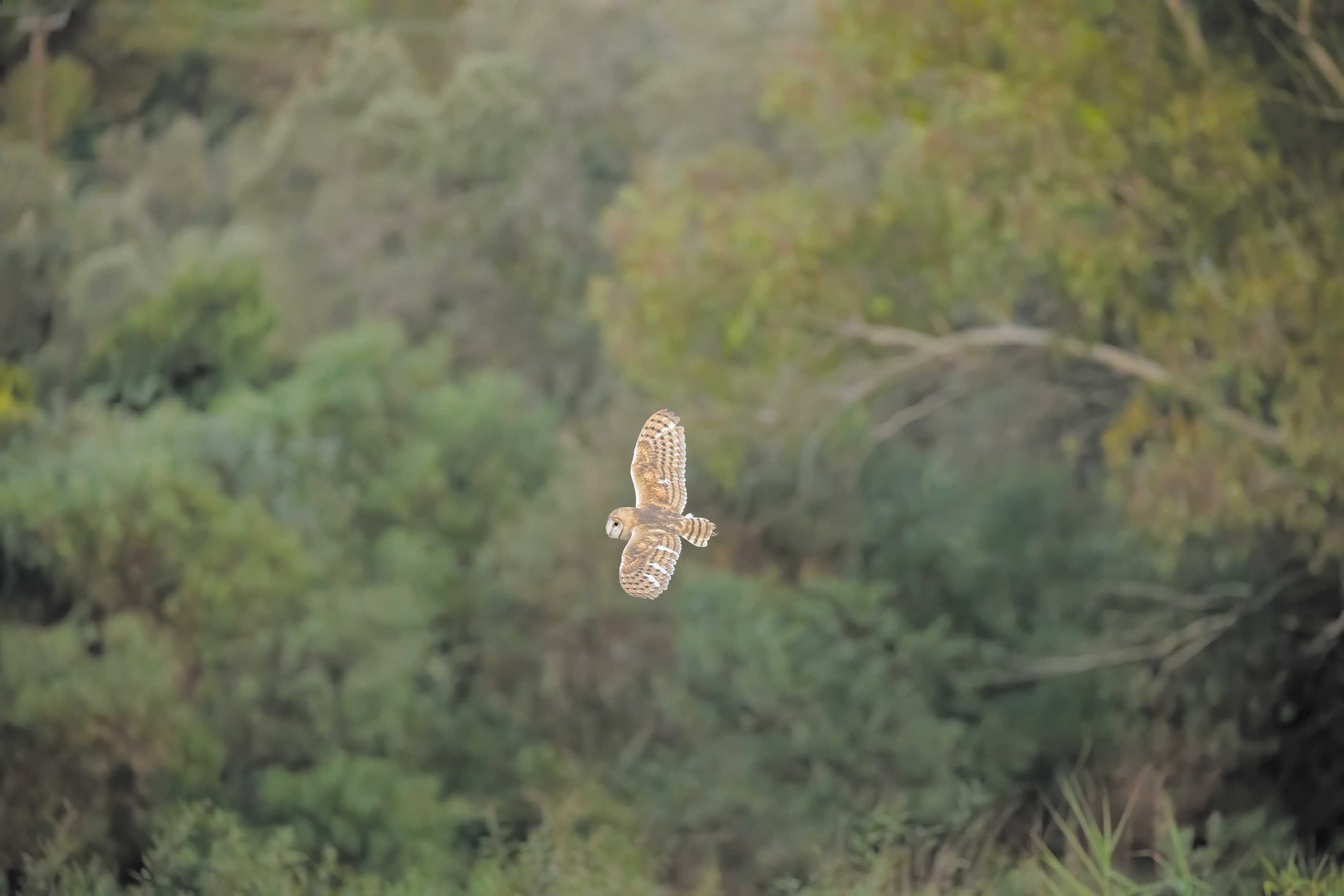‘On this island, maybe the old methods are the best’. ALIX NORMAN discovers a project that’s tackling a modern problem with an ancient approach
This is one of Cyprus’ successes – the good news we all need! It’s a feel-good story; something that has seen benefits for everyone from ministers to farmers, children to animals. It’s a tale of perseverance, and how word of mouth can work magic. And, most of all, it’s the story of Tyto alba: the island’s secretive, silent nocturnal predator…
The barn owl is considered the oldest of all owls in the world; around for 25 million years. They’ve long appeared in folklore, mythology and superstition: Shakespeare used owls to represent death in Macbeth; in Greece some believed that owl egg soup could cure epilepsy. And, throughout history, from the farms of Europe to the rice paddies of Japan, barn owls were used to control the local rodent population…

A barn owl perching in a cave (Zoltan Tolgyesi)
“This may come as a surprise, but barn owls are farmers’ biggest allies!” reveals Conservation Projects Officer at BirdLife Cyprus Antaia Christou. “Unlike other species of owl, their diet consists primarily of rodents; a single barn owl can consume more than 2,000 mice and rats in a year.”
Mice and rats have long been part of life, especially where agriculture exists. But with increasing development comes increasing vermin: everything from more crops to more available water sources to a warming climate can drastically increase the number of rodents.
On this island, rodenticides are the modern method of dealing with mice and rats. A poisonous substance that kills slowly and painfully, it’s widely used by local growers of avocadoes, carobs, pecans and barley – plants that are eaten or destroyed by rodents.
Unfortunately, these rodenticides come with a myriad of problems…
“Officially, rodenticides are regulated and controlled by the department of agriculture,” explains Antaia. “And those who handle them require strict training. But it’s time-consuming to learn how, when and where to spread these poisons, and not all are placed correctly. And, even when they’re properly handled, rodenticides disrupt the ecosystem.”
Rodent populations can also become immune. And the seed-like substance can poison other wildlife, as well as humans. In a study on childhood poisonings in Cyprus, six per cent of all cases were due to the accidental ingestion of rodenticides.
“There had to be a better alternative to the immense risks associated with rodenticides,” says Antaia. “And, looking back in time, we found our answer!”
Israel has been looking to the past for decades, she says. “The country has used barn owls to control its rodent populations since the 1980s, and has seen huge success. But in Cyprus, the idea was relatively unknown – until 2015, when BirdLife Cyprus had the idea of uniting all the relevant departments in one venture: the Barn Owl Project.”
With funding from the Ministry of Agriculture, and working in collaboration with the Game and Fauna Service, the Department of Forests, and the Veterinary Services, BirdLife spearheaded a National Action Plan: everyone could work together to encourage barn owls to nest near areas affected by rodents.
The idea was simple: bring back the barn owls, and there’d be no need for rodenticides.

Antaia holding a barn owl chick (Zoltan Tolgyesi)
“Barn owls are one of the few owl species that will happily nest in man-made structures. Put up a nesting box, and it’s more than likely you’ll find a couple making it their home. And, given their diet, they constitute an ideal, natural method of rodent control!”
There have been a few hiccoughs along the way, she notes: getting the farmers on board wasn’t always easy…
“Before you can put up a nesting box, you have to ask the local farmers to stop using rodenticides; in one Cyprus study, 80 per cent of birds were found to have the residue of rodenticides in their bodies. So initially, there was a lot of resistance to the idea. But then a few farmers signed on, asking for nesting boxes near their fields…”
Over time, the first nesting boxes were inhabited by mating couples. “Barn owls are so sweet,” says Antaia. “They mate for life, usually return to the same nests, and can have up to two broods of six chicks per year!” And while BirdLife spread the word with social media campaigns, workshops, talks and school visits, the farmers themselves used word of mouth…
“A year ago, a federation from Athienou called us out of the blue. They’d heard of the Project; another farmer had told them how well it had worked in his area. They asked if they, too, could have nesting boxes. So we surveyed the area, determined the best sites, and put up four new boxes. In no time, all were filled, and the damage to crops was reduced. Now, the farmers are calling for even more!
“It took a few years to get the word out,” says Antaia. “But in the end, it was the farmers themselves who were our best advocates: they could see the incredible difference the owls made to their crop yields!”
Today, the Barn Owl Project is fielding multiple requests. “From Pyrgos to Dhekelia, we’ve put up over 1,000 nesting boxes. About 50 per cent are now home to happy barn owls!”

Birdlife staff (Zoltan Tolgyesi)
Ultimately, of course, it’s the statistics that count. Since the launch of the Barn Owl Project, the Department of Agriculture has reported that Cyprus’ use of rodenticide has almost halved. And while nobody’s quite sure how many rats and mice have met their demise, the farmers certainly seem happy with the results!
“Now, we’re looking to the eastern end of the island,” says Antaia. “For a nesting box to go up, we need to receive several requests from the area. We then survey the region, determine the best places for the boxes, and work with local authorities to place and monitor the boxes.
“Unfortunately, the farmers in Famagusta seem more resistant to the idea. Only the mayor of Deryneia has approached us, and is fully supportive of the project.”
In time, Deryneia’s farmers will no doubt be marvelling at their increased crop yields and decreased rodent populations. And that will sway nearby villages. Because if one thing is clear, bringing back this time-honoured method of pest control has been a huge success!
“On this island,” Antaia concludes, “maybe the old methods are the best!”
For more information on the Barn Owl Project, visit https://birdlifecyprus.org/barn-owl-project/







Click here to change your cookie preferences